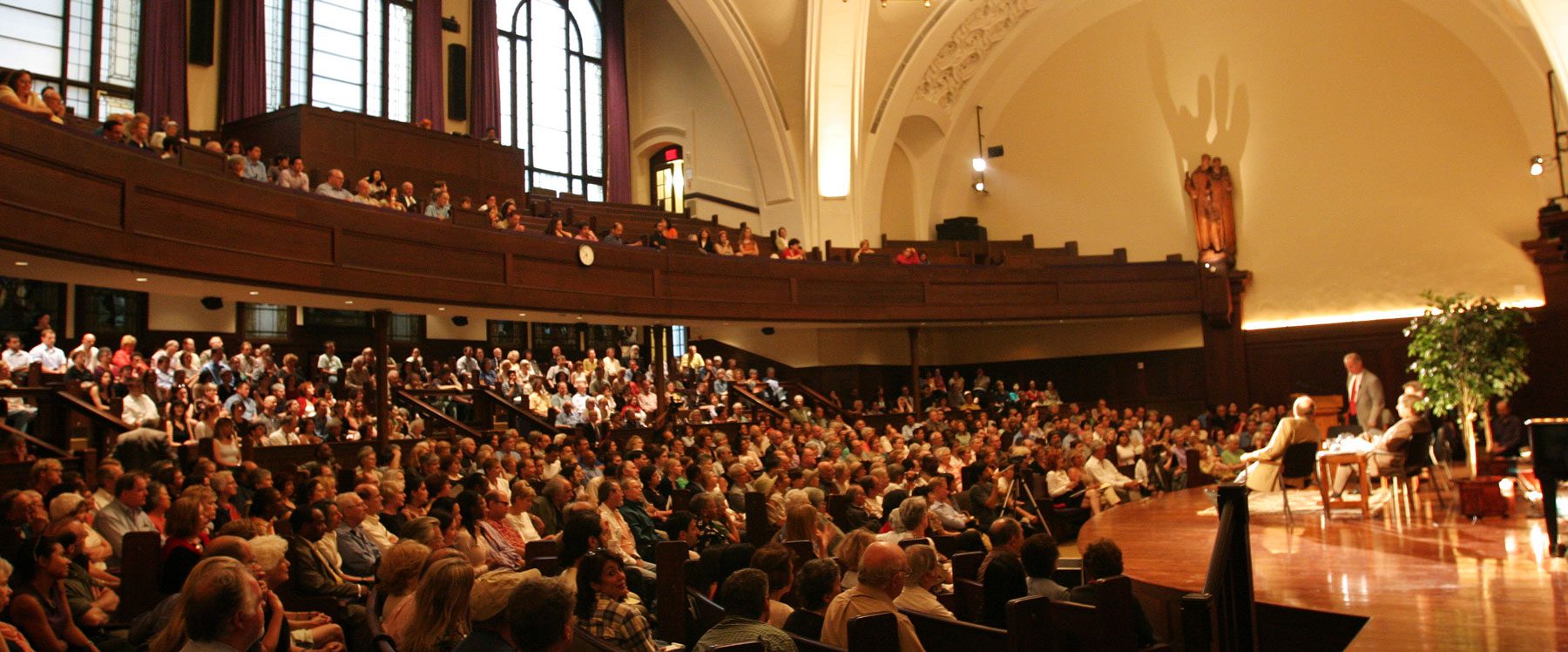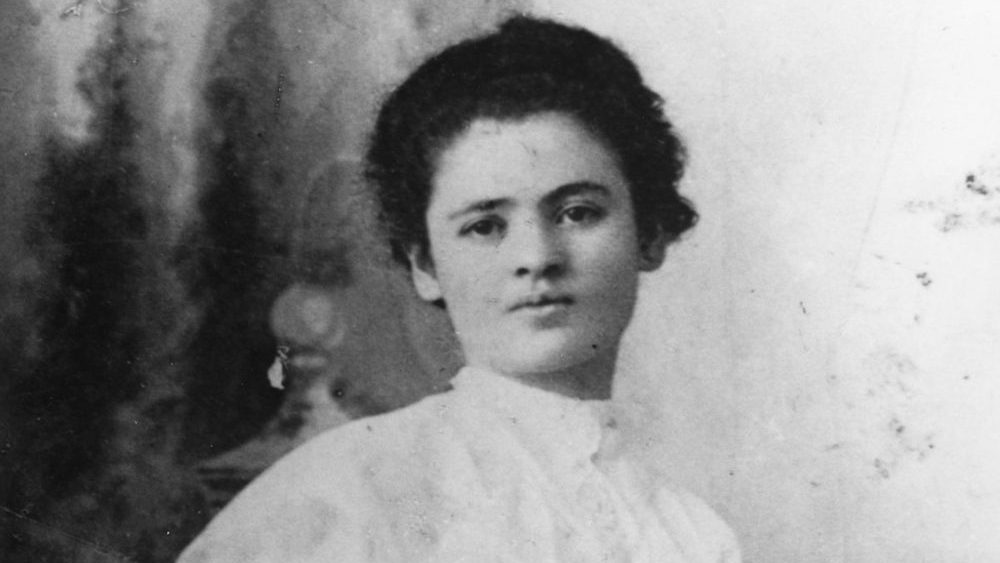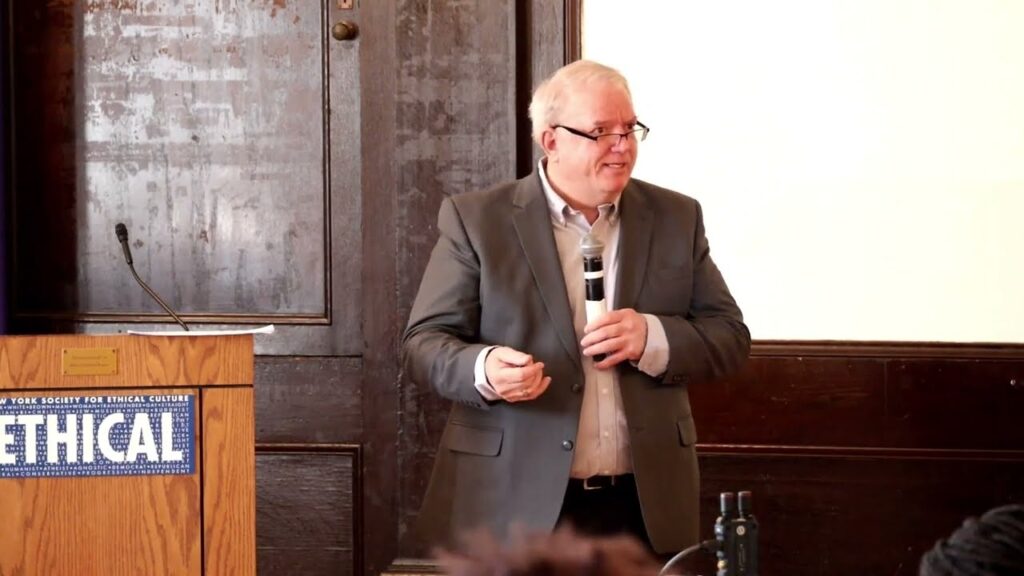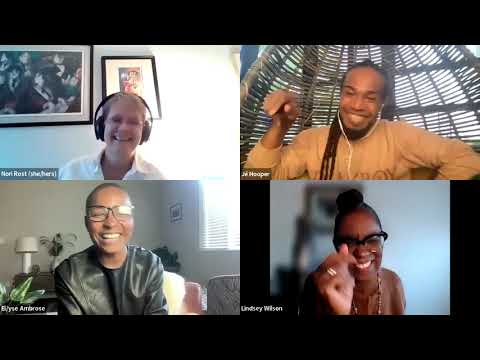
On Thursday evening, May 30, I participated in an interfaith service at St. Paul’s Chapel in lower Manhattan, then joined a candlelight procession to City Hall Park where I invoked the words of Ethical Culture Leader Algernon Black: “This is the call to the living, to those who refuse to make peace with evil, with the suffering and waste of the world.” When the gates to the park were locked by the police at midnight, I rolled out my sleeping bag on the sidewalk and nestled alongside my fellow witnesses to homelessness, marking the 25th anniversary of the overnight vigil that became a 200-day encampment calling itself “Homeward Bound Community Services,” but dubbed by the media “Kochville.” A book documenting its story, Sleeping with the Mayor by John Jiles, is the Ethics in Literature selection for August 4th.
I wondered whether I would be able to sleep. The sidewalk, even with a cushion was hard, and the traffic on Broadway ceaseless. New York truly is a city that never sleeps – and never turns out the lights. Some of my companions sang, played instruments, danced, read, told stories, ate and drank. I looked around me at this great city I call home, knowing that if it became too hard to bear, I could take the subway back to Brooklyn and crawl into my own bed. I could wake up refreshed in the morning, take a shower and get dressed, and still make it back to the steps of City Hall by 9 am the next morning for the press conference.
But I didn’t. I stayed. And I must have slept because I awoke to the shrill call of a bird overhead and remembered what my father once said when he visited: “I’ll take a barnyard rooster any day over the racket of NYC birds.” I had “slept rough” on a Broadway sidewalk and was now waiting for the Starbucks across the street to open so that I could avail myself of its bathroom and purchase a skim cappuccino. Later, we who remained gathered in to share our reflections, and I gave a “humanist blessing” while we held hands, passing a squeeze from person to person around the circle. The press conference was anti-climatic: few mayoral candidates and fewer media – just another ordinary day.
Here is a snapshot of a day in March 2013 among New York City’s Homeless Shelter Population:
• Total number of homeless people in municipal shelters: 50,748
• Number of homeless families: 12,121
• Number of homeless children: 21,219
• Number of homeless adults in families: 18,490
• Number of homeless single adults: 11,039
• Number of homeless single men: 8,244
• Number of homeless single women: 2,795
The latest Census Bureau figures show the city’s poverty rate catapulted to 20.1% last year, its highest point in more than 10 years. Anti-poverty groups say working-class people are increasingly falling to the bottom of the economic food chain – those whose hours are cut back or lose the second job that paid for clothes and food.
Mayor Michael Bloomberg pledged to slash homelessness by two-thirds by 2009. However, according to the Coalition for the Homeless, the shelter population has risen 61 percent while Mr. Bloomberg has been mayor, propelled by a 73 percent increase in homeless families. His administration is meeting its legal obligation by filling the city’s shelters to bursting. But, by ending housing subsidies, the city has no transitional housing support for the homeless. “The Department of Homeless Services seems to be operating in a time warp,” said Steven Banks, the attorney in chief for the Legal Aid Society and lead lawyer in homeless family litigation against the city since the 1980s. “Its policies fly in the face of everything we’ve learned in the last 30 years.”
And what does Mayor Bloomberg say? On the day when the above statistical snapshot was taken, he fumed that New York State’s guarantee to shelter the homeless means “you can arrive in your private jet at Kennedy Airport, take a private limousine and go straight to the shelter system, and walk in the door and we’ve got to give you shelter.” It costs taxpayers an average of $36,799 a year to shelter a family, according to city data, far more than it would to simply subsidize its rent.
I knew all of this before sleeping outside City Hall Park on May 30th. After all, the NY Society has run a shelter since 1982, and I serve on the clergy advisory council of the interfaith Emergency Shelter Network. But until that night my empathy was theoretical. The next morning I literally felt it in my bones. We have now joined another coalition: United to End Homelessness. It includes advocates, homeless and formerly homeless individuals, service providers, faith leaders, and experts on the issue of homelessness in New York City. Our goal is to highlight New York City’s homelessness crisis during the 2013 mayoral election. Our next mayor must do better, and we will make sure that she or he does.







